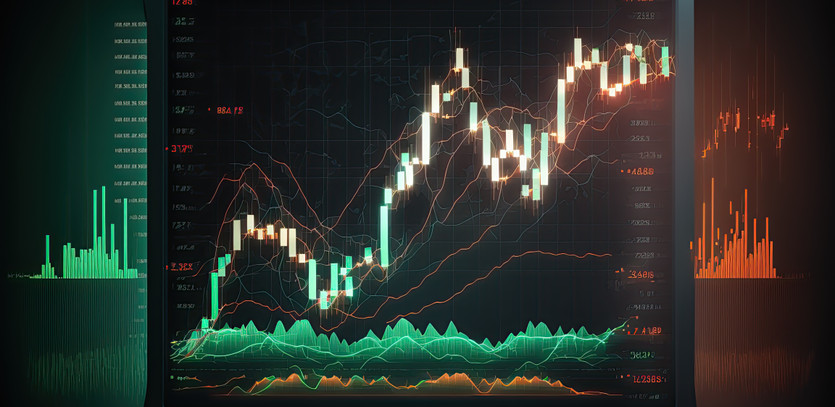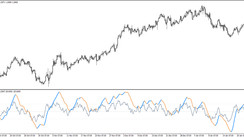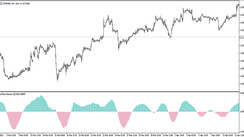Understanding the Ideal Trading Timeframe for Your System
The choice of timeframe significantly influences the effectiveness of your trading system. It becomes trickier to craft a profitable system as you reduce the timeframe. Hence, devising a system for a daily chart is simpler than sculpting one for a 5-minute chart due to the increased 'noise' in smaller timeframes.
Evaluating your system across many years of varied data might be a daunting task, given the overwhelming volume of information involved. Additionally, smaller timeframes often imply lesser profit and risk per trade. The key is to establish a harmonious balance between your trading account's size and the risk you're ready to take.
Avoiding the New Trader's Pitfall
Let's focus on a common stumbling block for novices, known as the "New Trader's Trap":
A smaller trading account usually corresponds to a smaller trading timeframe. The smaller the timeframe, the trickier it is to trade.
Do you notice the snare here?
Newbies often venture into the trading realm with modest capital, intending to earn quick profits. They lean towards smaller timeframes, believing that intraday trading paves the way to swift monetary gains.
They begin their journey by trading on 1-minute or 5-minute charts, aiming to scalp the market and earn a few pips here and there. This approach, however, places them in a tough position as they grapple with a challenging timeframe, especially as beginners.
This strategy potentially sets them on a path towards rapid failure.
Creating profitable trading systems is far easier with daily timeframes compared to 5-minute charts. As such, we suggest that budding system traders develop their systems using daily charts.
Regardless of whether you intend to trade in these timeframes, building a system using daily charts is an excellent way to gain confidence and hone your skills in developing successful systems.
Since a daily chart offers better prospects for a profitable system compared to a 5-minute chart, it's advisable to commence with the daily chart.
Why persist in a difficult task and demotivate yourself? Cultivate your confidence and skillset before progressing to more challenging intraday timeframes.
The Intricacies of Scalping
Scalping is a concept that captivates many system traders. The allure of making small, consistent profits daily from the market while risking very little is enticing.
With scalping, it's typically expected that you're trading within a small timeframe, likely 5 minutes or less. The goal is to initiate a position and garner just a few pips of profit.
Identifying the Best Timeframe for Trading
The optimal timeframe for trading largely hinges on your personal preferences.
If you prefer a measured pace and like to ponder over each trade, perhaps longer timeframes are more suitable. Conversely, if you enjoy the thrill of quick-paced action, it might be worth exploring 5-minute charts.
The following table outlines some of the fundamental timeframes and their respective pros and cons:
| Time Frame | Description | Advantage | Disadvantages |
|---|---|---|---|
| Long-term | Long-term traders typically refer to daily and weekly charts. Trades last from a few weeks to several months, even years. | No need for intraday market monitoring, fewer transactions hence lesser spread payments, ample time for each trade | Large swings, patience needed as only one or two goods occur annually, larger account required for longer-term swings, frequent losing months |
| Short-term (Swing) | Short-term traders use hourly timeframes, holding trades for several hours to a week. | More trade opportunities, lesser chances of losing months, less reliance on one or two trades annually for profitability | Higher transaction costs due to more spreads, overnight risk becomes a factor |
| Intraday | Intraday traders use minute charts such as 1-minute or 15-minute. Trades are held intraday and exited by market close. | Numerous trading opportunities, less chance of losing months and overnight risk | Transaction costs will be significantly higher due to more spreads, mental challenges due to frequent bias changes, profits limited by daily exit requirement |
Remember, the choice of timeframe should inherently resonate with your personality. If something feels off, perhaps it's not the right fit for you. That's why it's crucial to try demo trading across various timeframes to find your comfort zone. This will enable you to make the most informed trading decisions possible.
Once you've determined your preferred timeframe, that's when the real excitement begins! You can then start analyzing multiple timeframes to better understand the market.
Make a Balance with Timeframes
In the grand scheme of trading, there's no 'one-size-fits-all' when it comes to selecting the best timeframe. It varies widely based on individual trader's goals, risk tolerance, time commitment, and personal temperament. From the rapid-fire world of scalping to the patience-testing long-term trading, each timeframe holds its unique advantages and challenges.
Shorter timeframes might seem attractive with numerous opportunities and limited risk, but they also demand more time, increased transaction costs, and can be mentally exhausting. Conversely, longer timeframes require less time commitment and yield potentially higher profits, but they also require larger account balances and a significant level of patience.
In addition, remember to be aware of the "New Trader's Trap" as you embark on your trading journey. Beginners often fall into the pitfall of attempting to trade in challenging timeframes, driven by the lure of quick gains. Therefore, it is crucial to gain knowledge and build your skillset on longer timeframes before moving to more difficult intraday timeframes.
Finally, it's of utmost importance to align your chosen timeframe with your trading personality. If you're constantly uncomfortable with the pace or the level of activity within your chosen timeframe, it may lead to unnecessary stress and sub-optimal trading decisions.
Engage in demo trading across various timeframes and find your comfort zone. It is the best way to enhance your trading strategy and decision-making process. Once you've chosen your optimal trading timeframe, you can delve into the captivating world of multi-timeframe market analysis.
Just remember, successful trading is not merely about choosing the right timeframe, but about maintaining a well-balanced strategy that includes sound risk management, a reliable trading system, and an unwavering discipline to stick to your plan.
Happy trading!





